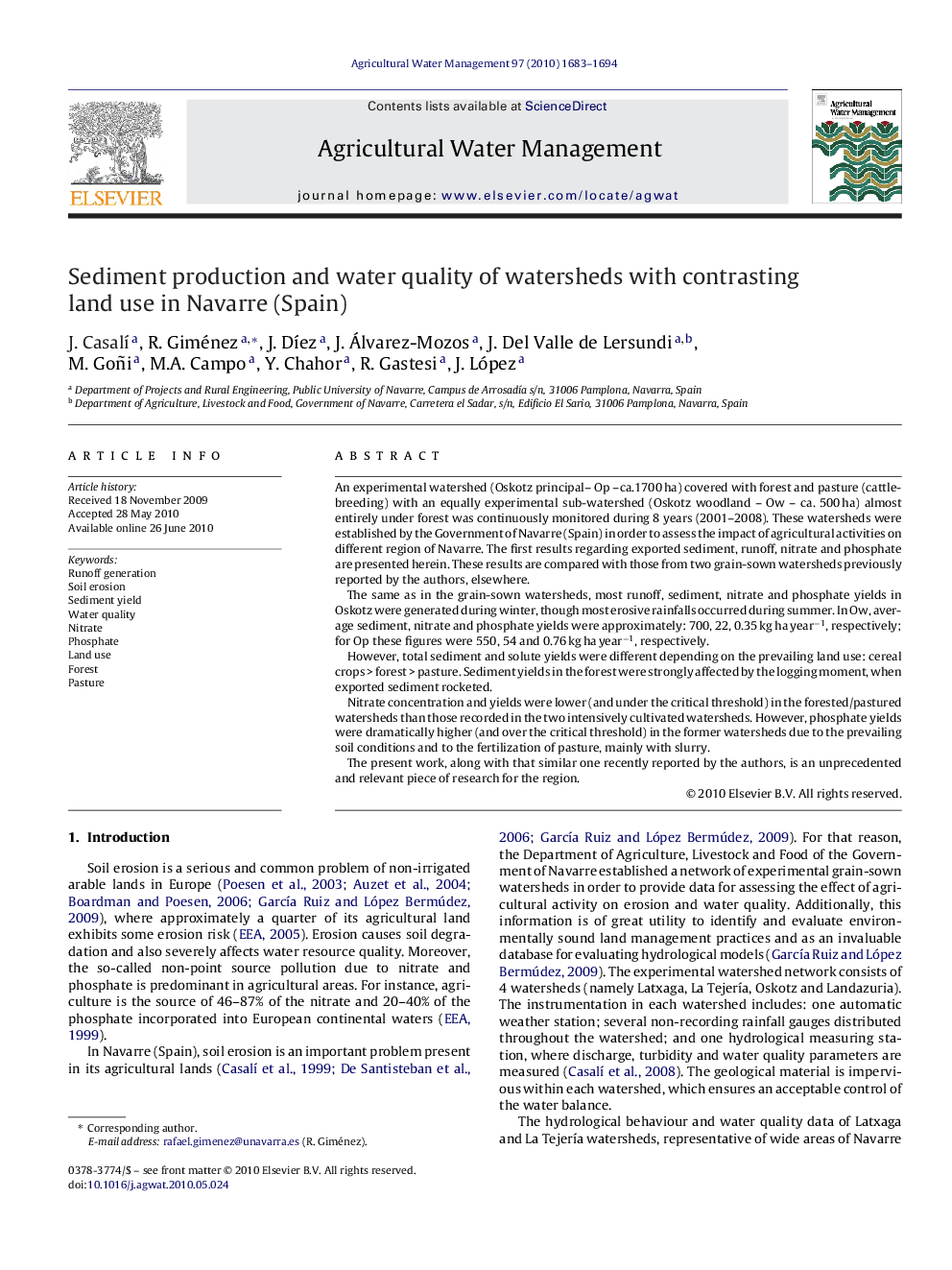| Article ID | Journal | Published Year | Pages | File Type |
|---|---|---|---|---|
| 4479731 | Agricultural Water Management | 2010 | 12 Pages |
An experimental watershed (Oskotz principal– Op –ca.1700 ha) covered with forest and pasture (cattle-breeding) with an equally experimental sub-watershed (Oskotz woodland – Ow – ca. 500 ha) almost entirely under forest was continuously monitored during 8 years (2001–2008). These watersheds were established by the Government of Navarre (Spain) in order to assess the impact of agricultural activities on different region of Navarre. The first results regarding exported sediment, runoff, nitrate and phosphate are presented herein. These results are compared with those from two grain-sown watersheds previously reported by the authors, elsewhere.The same as in the grain-sown watersheds, most runoff, sediment, nitrate and phosphate yields in Oskotz were generated during winter, though most erosive rainfalls occurred during summer. In Ow, average sediment, nitrate and phosphate yields were approximately: 700, 22, 0.35 kg ha year−1, respectively; for Op these figures were 550, 54 and 0.76 kg ha year−1, respectively.However, total sediment and solute yields were different depending on the prevailing land use: cereal crops > forest > pasture. Sediment yields in the forest were strongly affected by the logging moment, when exported sediment rocketed.Nitrate concentration and yields were lower (and under the critical threshold) in the forested/pastured watersheds than those recorded in the two intensively cultivated watersheds. However, phosphate yields were dramatically higher (and over the critical threshold) in the former watersheds due to the prevailing soil conditions and to the fertilization of pasture, mainly with slurry.The present work, along with that similar one recently reported by the authors, is an unprecedented and relevant piece of research for the region.
